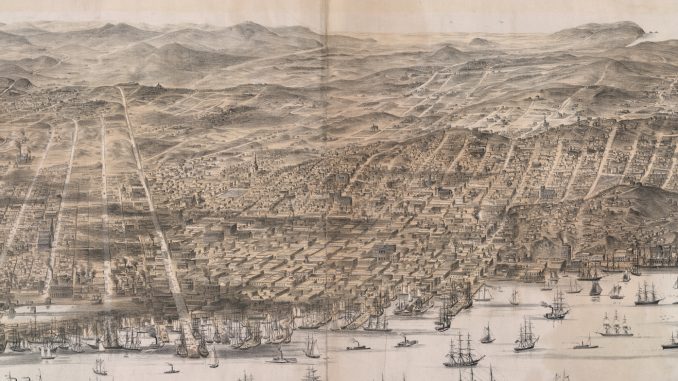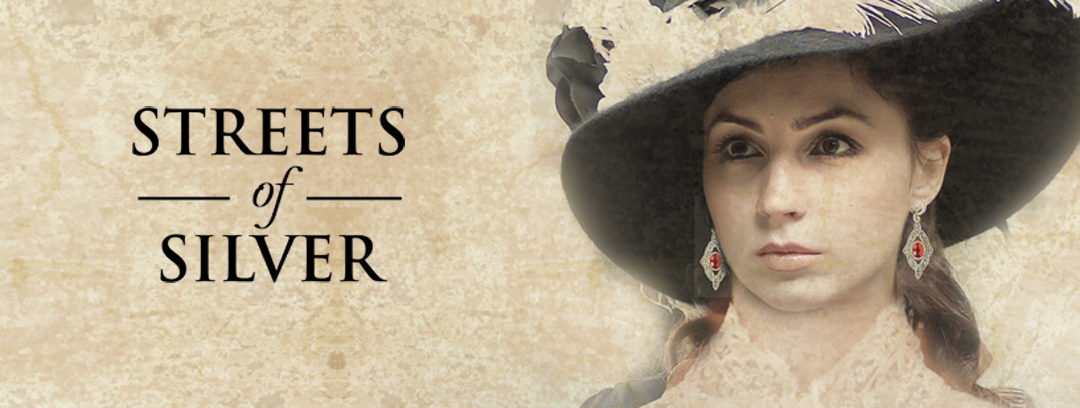
Yerba Buena, they called it then. It’s a Spanish term that translates to “good herb”, or as some would have it, “mint.” And mint it was, but not of the tasty-plant variety. Rather, it was of the type that produces coin and bullion by the cartload.
Yerba Buena started out as a sleepy little village in the back of beyond, perched on a mudflat on the edge of a bay that was frequently hidden from the ocean by a bank of fog. And it would probably have stayed a quiet little fishing hamlet, except for a chance discovery in a mill-race some 130 miles away.
It was gold, it was 1848, and the rush was on.
Eager miners poured in from all over the world, by the fastest route they could find. For most, this meant by ocean; ox-cart across the then-unsettled central United States was far too slow. And the sleepy little village on the edge of the bay became the jumping-off point for a tsunami of visitors, all pelting hell-for-leather toward the goldfields. They needed food and tents and picks and shovels. They needed clothes and boots and medicine and entertainment. All these things little Yerba Buena, now called San Francisco, was happy to provide– for a price. And in less than a year the village became a thriving town of over 25,000 souls.
For a couple of years the goose hung high, but then the inevitable crash came. Gold production peaked in 1852, gradually dropping for the next five years until it finally slowed to a trickle. Even with the new hydraulic mining techniques developed in 1853 the supply of gold was half what it had been, and by 1857 the miners were drifting away to more promising territories. San Francisco began to doze off again.
At least, that was the situation until a couple of miners in the barren mountain range to the east of the Sierras decided to assay the gummy mud that had been clogging their gold-mining equipment.
It was silver, it was 1860, and the rush was on again.
The mud was an incredibly rich silver deposit, and the prospectors who had been drifting away returned with a vengeance. The boom town of Virginia City, Nevada, was founded, and San Francisco again became the favored port of entry for the new rush of avid miners. San Francisco went from 57,000 population in 1860 to nearly triple that in 1870, and the biggest silver discoveries were still in the future.
By the time this second rush ended around 1880, the village formerly known as Yerba Buena was well enough established that it continued to grow and thrive without the impetus of a mining frenzy to sustain it.
So what happened to San Francisco between the time the Gold Rush ended in 1855 and the Great Earthquake struck in 1906?
The Comstock Lode.

Be the first to comment